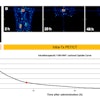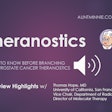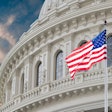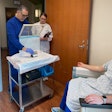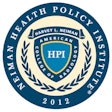
A plan to improve job prospects for nuclear medicine trainees by merging their training path with that of diagnostic radiologists has been scrapped by the American Board of Nuclear Medicine (ABNM) and the American Board of Radiology (ABR).
The plan would have dissolved ABNM and folded its functions and training programs into ABR, creating a single pathway leading to ABR certification in nuclear medicine and diagnostic radiology. The new setup would replace the current nuclear medicine and nuclear radiology pathways, which require separate certification for radiologists by ABR and nuclear medicine physicians by ABNM.
Discussions about the merger began two years ago, with the goal of better preparing nuclear medicine trainees for a perpetually difficult job market with a new, broader certification for imaging specialists and nuclear medicine physicians.
But in a November 6 letter to the organization's membership, ABNM Chair Dr. Louise Thomson cited opposition from several entities, including the Society of Nuclear Medicine and Molecular Imaging (SNMMI) and the American College of Nuclear Medicine (ACNM), as part of the ABNM-ABR task force's decision not to proceed with the plan. In addition to her post as ABNM chair, Thomson is director of clinical cardiac MRI at the S. Mark Taper Foundation Imaging Center at Cedars-Sinai Medical Center.
Adding weight to the decision were responses to the ABNM-ABR task force's 60-day comment period, in which the group received 294 replies to two main questions. The first question asked whether a new discipline of nuclear medicine should be created within ABR, ABNM should be dissolved, and the subspecialty of nuclear radiology within ABR should be replaced. There were 137 (55%) negative responses to this question.
The second question asked whether a single pathway should be created leading to ABR certification in nuclear medicine and diagnostic radiology, which would replace the current nuclear medicine and nuclear radiology pathways to separate certification by ABR and ABNM. There were 121 (54%) favorable responses to this question.
ABNM also received a petition signed by 80 individuals who proposed that ABNM remain the primary certifying body for nuclear medicine in the U.S.
A second survey by SNMMI of its nuclear medicine physician and technologist members also found tepid support. The negative feedback led SNMMI's board of directors last month to unanimously reject the merger plan.
Primary concerns of SNMMI respondents were the dissolution of ABNM, the subsequent loss of primary specialty status, and the creation of a single training pathway that might prohibit nonimaging specialists from enrolling in nuclear medicine training.
ACNM also surveyed its membership and found that "a very significant proportion" did not support the proposal "in any format." That opposition also led to ACNM's rejection of the ABNM-ABR plan.
Thomson's letter stated there was "broader support for training pathways leading to dual certification in nuclear medicine and diagnostic radiology, which the majority felt was necessary because of advances in technology and the introduction of new radiopharmaceuticals."
However, some ABNM members stated that a dual training pathway would make it "impractical for physicians certified by other [American Board of Medical Specialties (ABMS)] member boards to train in nuclear medicine," according to the ABNM communiqué.
Thomson emphasized that ABNM will continue to work to increase the number of approved dual training programs that will lead to both ABNM and ABR certification.
That route would include the 16-month nuclear radiology pathway during four years of diagnostic radiology residency, one-year nuclear radiology fellowship programs, and combined training programs through a three-year stint in diagnostic radiology with 16 to 24 months in nuclear medicine.
"The solutions to these related problems will require a joint effort by the boards, training programs, and professional societies," the letter concluded. "Although the ABNM-ABR joint proposal will not go forward, the ABNM and ABR have established solid lines of communication that will be very helpful in meeting the challenges that lie ahead."



